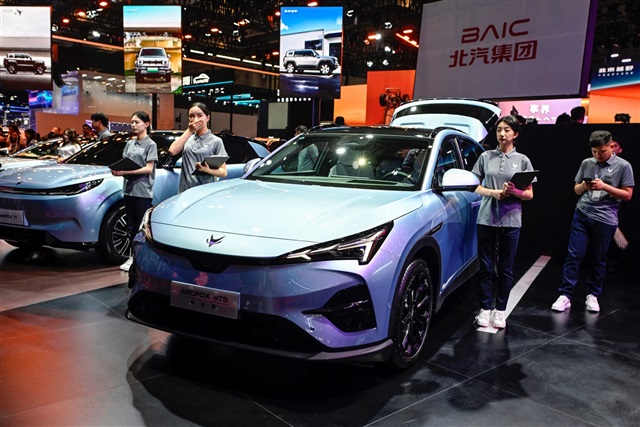Yulon Nissan Motor Co. on December 23, 2025, held a preview event ahead of the 2026 Taipei New Car and New Energy Vehicle Show, unveiling several high-profile models making their Taiwan debut. Among them were the Nissan Formula E GEN3 Evo—an ABB Formula E World Championship title-winning race car—and the Nissan Qashqai, a compact crossover equipped with the brand's third-generation e-POWER hybrid system.
Waymo's fleet of Jaguar I-Pace-based robotaxis experienced a widespread shutdown during a recent major power outage in San Francisco, leaving multiple vehicles stalled and blocking roads. The incident has raised questions about the autonomous cars' ability to handle unexpected disruptions, with experts attributing the problem to operational and management shortcomings rather than software faults.
Innolux subsidiary CarUX has merged with Pioneer, with chairman and chief executive Jim Hung saying the new CarUX will deliver post-merger synergies through three 100-day phases and stressing that it is not designed as a place to coast.
As trade tensions between the US and China intensify, accompanied by tighter technology restrictions, Wanshih Electronic says it is doubling down on precision manufacturing as the cornerstone of its innovation strategy while reshaping its global footprint to navigate mounting geopolitical risk.
US autonomous sensing technology firm Luminar, once hailed as a rising star in the Light Detection and Ranging (LiDAR) sector, recently filed for bankruptcy protection, raising alarms across the industry. LiDAR has long been regarded as a critical sensor technology for achieving Level 3 autonomous driving, but its global adoption is clearly following an "East fast, West slow" pattern due to regulatory, cost, and market structure factors.
XING Mobility announced it will showcase advancements in electric vehicles (EVs), energy storage systems, and AI data center backup batteries at the 2026 Consumer Electronics Show (CES 2026) in the US. The presentation will focus on a decade of development in immersive cooling technology.
Star Charger, a charging operator under HD Renewable Energy (HDRE), has announced it has achieved 159 operational stations across Taiwan. To meet the growing electric vehicle (EV) charging demand, Star Charger launched its first 1 MW-class high-power fast-charging dedicated station in Taichung City, and plans to bring online 10 more large-scale dedicated stations by 2026.
Talks between China's Wingtech Technology and its Dutch subsidiary Nexperia are ongoing as the companies seek to resolve a governance dispute that has disrupted semiconductor supplies, with Wingtech's chair warning that prolonged uncertainty could further damage global supply chains.
Major contract electronics makers are accelerating strategic realignments in line with the rapid development of automotive electronics and architectures for software-defined vehicles (SDV). Foxconn has continued to clarify its automotive layout as it expands from full vehicle assembly into core electronics for SDVs, by integrating semiconductors, smart cockpits, battery management systems (BMS), and silicon carbide (SiC) power components into its contract design and manufacturing services (CDMS).
The global automotive supplier landscape is entering a period of heightened competition as slowing electric vehicle adoption forces a strategic pivot toward digital cabin technology and automated driving systems. While macroeconomic headwinds cloud the sales outlook heading into 2026, the push to upgrade vehicle intelligence is creating a rift between entrenched industry leaders and aggressive new entrants.
The automotive industry is experiencing a significant structural transformation, putting traditional Tier 1 suppliers under increasing pressure amid a shift toward system integration (SI) capabilities. Major component manufacturers are facing financial difficulties and operational changes, while companies with advanced integration expertise are poised to capture new market opportunities.
More coverage



